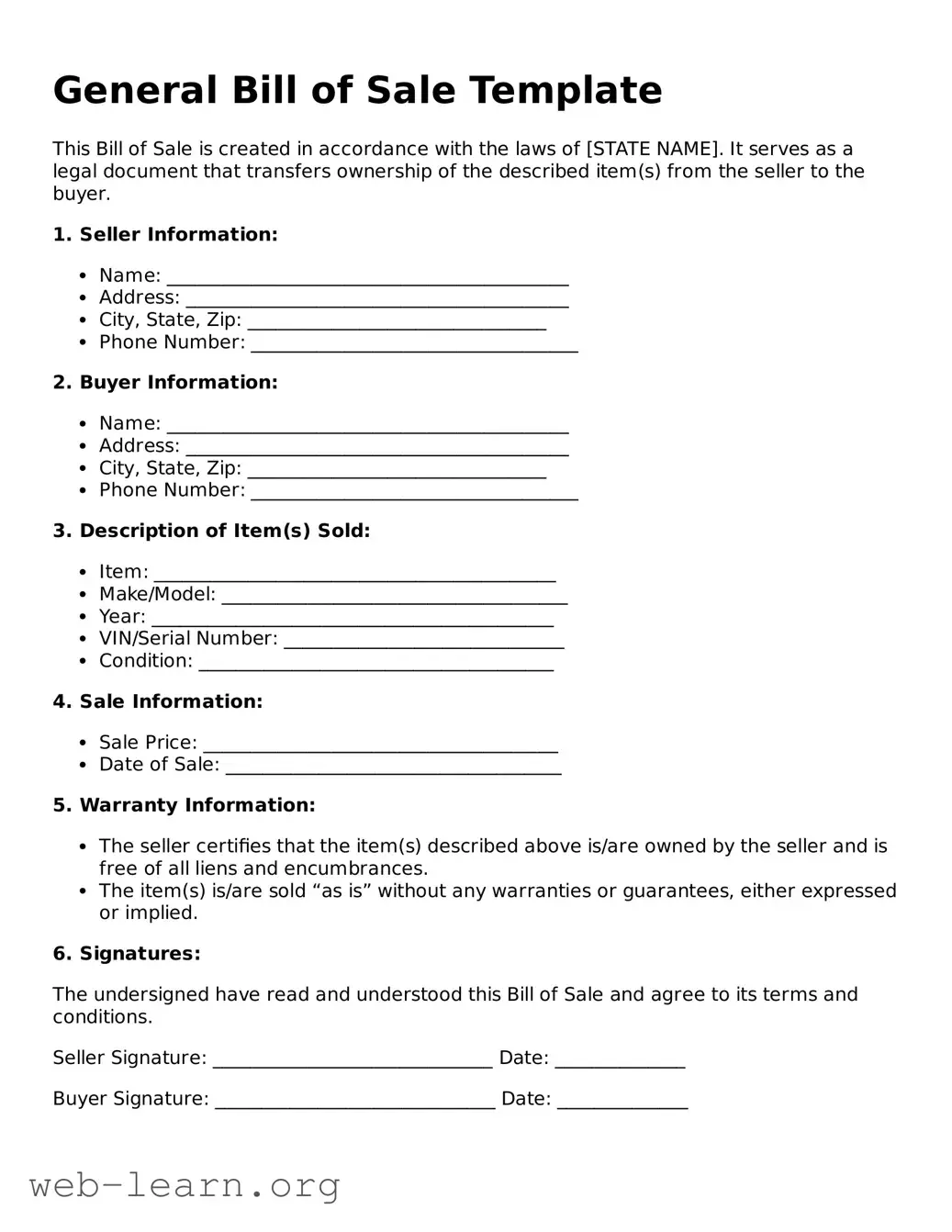General Bill of Sale Template
This Bill of Sale is created in accordance with the laws of [STATE NAME]. It serves as a legal document that transfers ownership of the described item(s) from the seller to the buyer.
1. Seller Information:
- Name: ___________________________________________
- Address: _________________________________________
- City, State, Zip: ________________________________
- Phone Number: ___________________________________
2. Buyer Information:
- Name: ___________________________________________
- Address: _________________________________________
- City, State, Zip: ________________________________
- Phone Number: ___________________________________
3. Description of Item(s) Sold:
- Item: ___________________________________________
- Make/Model: _____________________________________
- Year: ___________________________________________
- VIN/Serial Number: ______________________________
- Condition: ______________________________________
4. Sale Information:
- Sale Price: ______________________________________
- Date of Sale: ____________________________________
5. Warranty Information:
- The seller certifies that the item(s) described above is/are owned by the seller and is free of all liens and encumbrances.
- The item(s) is/are sold “as is” without any warranties or guarantees, either expressed or implied.
6. Signatures:
The undersigned have read and understood this Bill of Sale and agree to its terms and conditions.
Seller Signature: ______________________________ Date: ______________
Buyer Signature: ______________________________ Date: ______________
